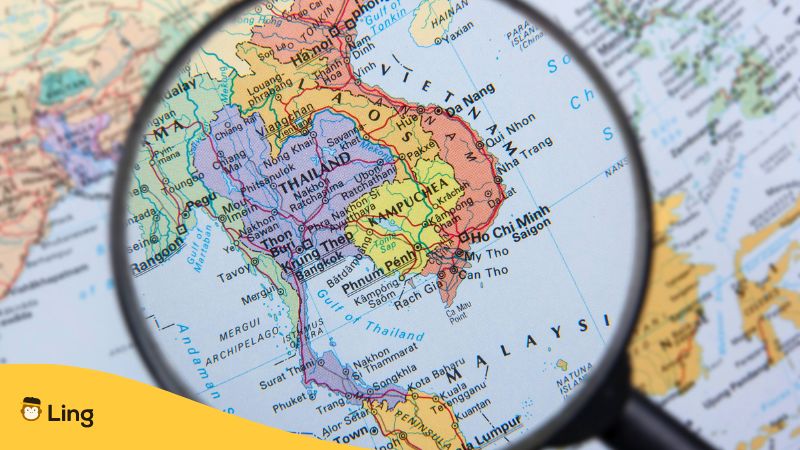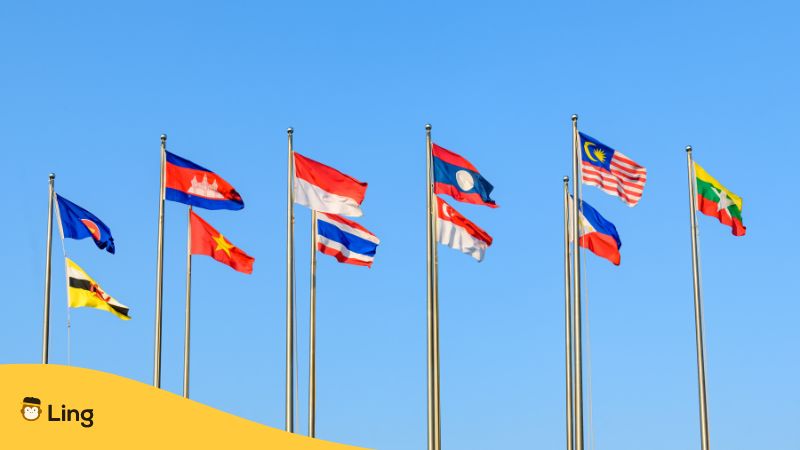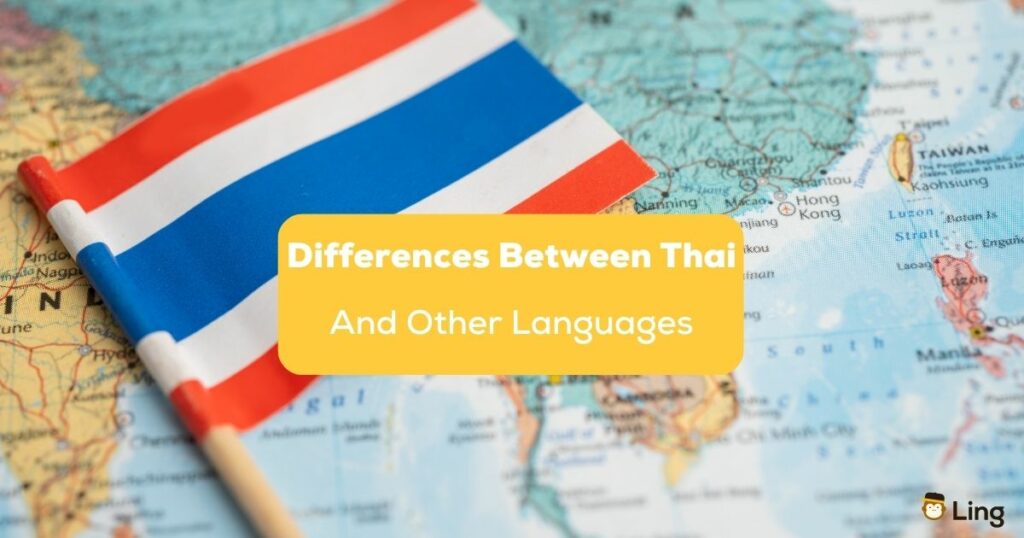Hey there, friends! Have you ever been curious about the fascinating diversity of languages in Southeast Asia? Well, buckle up because, in this article, we’re diving into the exciting world of language differences between Thai and other languages spoken in the region. Southeast Asia is a linguistic treasure trove, with a tapestry of unique languages and dialects. Thai, as the official language of Thailand, stands out with its distinct characteristics, including its tonal nature and unique script.
We’ll explore how Thai differs from its neighboring languages, such as Vietnamese, Indonesian, Malay, and others, while uncovering intriguing variations in grammar, vocabulary, and cultural influences. So, whether you’re a language enthusiast or simply intrigued by Southeast Asian cultures, get ready to discover the vibrant tapestry of languages that make this region so enchanting.
Differences Between Thai And Other Languages Spoken In Its Neighborhood
Thai stands out as the national language of Thailand with its unique tonal nature. But in fact, it would be more appropriate to emphasize that it is the Central Thai language or Siamese that is the official language of Thailand, given that Thai people speak in various Thai dialects. This is the native language spoken in the Central (including the Bangkok Metropolitan Region), Southwestern, and Eastern regions of Thailand.
For the sake of brevity, we’ll restrict this comparison to the languages spoken in the Thai neighborhood – Burmese, Indonesian (Bahasa Indonesia), Khmer, Vietnamese, and the Malay language (Bahasa Malaysia).

#1 Language Family (Trakūl p̣hās̄ʹā – ตระกูลภาษา)
Thai belongs to the Tai-Kadai language family, while Malay, Indonesian, Vietnamese, and Khmer are part of the Austronesian language family. Burmese, on the other hand, belongs to the Sino-Tibetan language family. This difference in language family means these languages have distinct linguistic roots and characteristics.
#2 Script (S̄khript̒ – สคริปต์)
Thai uses its own unique script, known as the Thai alphabet or Thai script, which is an abugida writing system. Burmese and Khmer, on the other hand, use the Burmese and Khmer scripts, respectively, which are derived from the ancient Indian Brahmi script. Vietnamese uses the Latin-based Vietnamese alphabet (Quốc Ngữ). The writing systems between Vietnamese and Thai differ in characters and conventions.
On the other hand, Malay primarily uses the Latin alphabet, although it can also be written in Jawi script, a modified Arabic script. Similarly, Indonesian primarily uses the Latin alphabet, although it can also be written in the traditional Javanese script for ceremonial purposes.
#3 Tones (S̄eīyng – เสียง)
Thai is a tonal language with five tones. This means that the pitch or tone used to speak a word can change its meaning. In this regard, Vietnamese shares this similarity with Thai; however, instead of five, it has six tones in its phonetics.
Tones play a crucial role in distinguishing word meanings in both languages, even when the number and contours of tones differ between Thai and Vietnamese. On the contrary, the Burmese, Malay, Indonesian, and Khmer languages are non-tonal in nature.

#4 Vocabulary (Khả ṣ̄ạphth̒ – คำศัพท์)
Thai’s core vocabulary has roots in the Tai-Kadai language family and includes words derived from ancient Tai languages. Additionally, Thai has borrowed vocabulary from Pali (a liturgical language of Buddhism), Sanskrit, and Khmer due to historical and cultural interactions.
Burmese vocabulary has roots in the Sino-Tibetan language family, with borrowings from Pali, Sanskrit, Mon (an Austroasiatic language), and other languages spoken in the region. Historical trade and cultural exchanges have also contributed to the incorporation of loanwords from Persian, Portuguese, English, and Chinese.
The Khmer language has a vocabulary with ancient origins dating back to the Khmer Empire. It primarily belongs to the Austroasiatic language family. Khmer vocabulary has been influenced by Pali and Sanskrit due to the spread of Buddhism and Hinduism in the region.
Vietnamese is primarily an Austroasiatic language with significant influences from Chinese due to historical and cultural interactions. Vietnamese vocabulary has borrowed extensively from the Chinese language, particularly during periods of Chinese domination.
Malay and Indonesian share similar vocabulary histories due to their linguistic and historical connections. Both languages belong to the Austronesian language family. Malay vocabulary has been influenced by Sanskrit, Arabic, Persian, Tamil, Chinese, Portuguese, Dutch, and English. Indonesian, as a standardized form of Malay, retains much of the same vocabulary.
#5 Grammar (Wịyākrṇ̒ – ไวยากรณ์)
Thai, Burmese, Khmer, Vietnamese, Malay, and Indonesian exhibit grammatical differences due to their distinct language families and historical influences. Both Thai and Vietnamese have the subject-verb-object (SVO) word order. However, the latter is known for its use of classifier words and a complex system of verb tenses. Khmer also tends to have an SVO word order.
Malay and Indonesian also follow the SVO word order and have a relatively simpler writing style. The only stand-alone is the Burmese language, which generally follows a subject-object-verb (SOV) order. Just like Thai grammar, each language has its own unique set of grammatical rules, verb conjugations, and sentence structures, reflecting the diversity of Southeast Asian languages.
List Of Languages Sharing Similarities With Thai
These languages showcase the rich linguistic connections and cultural heritage in the region, offering an insight into the broader context of the Thai language within the Southeast Asian linguistic landscape. Here’s a list of languages that share some similarities with Thai.
#1 Lao
The Thai and Lao languages are closely related languages and are mutually intelligible to a large extent. They share similarities in vocabulary, grammar, and pronunciation due to their historical and geographical proximity. You can read more about the relationship that these two languages share in this informative article on the Ling platform.
#2 Isan
Isan, also known as Northeastern Thai, is a regional language spoken in the northeastern region of Thailand. It is closely related to the Lao language and shares many similarities with Thai.
#3 Northern Thai
Also called Kham Mueang or Lanna, the Northern Thai language is spoken in the northern regions of Thailand. It has significant similarities with Thai, although it has its own distinct dialect and pronunciation.

#4 Shan
Shan is spoken in parts of Myanmar (Burma) and northern Thailand. It is closely related to Thai and is considered a Tai language. Speakers of Thai and Shan can understand each other to some extent.
#5 Zhuang
Zhuang is primarily spoken in the Guangxi Zhuang Autonomous Region of southern China. It belongs to the same language family as Thai and shares some similarities in vocabulary and grammar.
Learn Thai With Ling
These differences highlight the unique linguistic characteristics of each of these languages, reflecting the diverse language families and cultural influences in Southeast Asia. Want to know a fun fact? There are more than 20 languages carrying the official or national status spoken across the Southeast Asian region.
Are you interested to learn some of these languages? Thai? Perhaps Khmer or Malay? Well, you can make that choice after browsing through hundreds of blog articles on Ling for these languages. And when you zero down to one or two languages, the Ling app is here to kick-start your journey! Through this gamified app, you can learn new words, gain knowledge through engaging audio lessons, and participate in a challenging quiz.
So, go to Google Play Store or Apple App Store and download the Ling app now!




































































